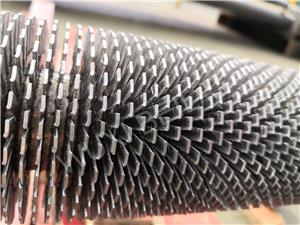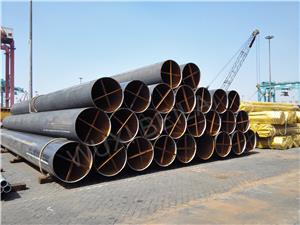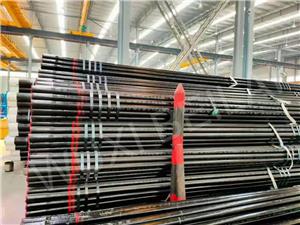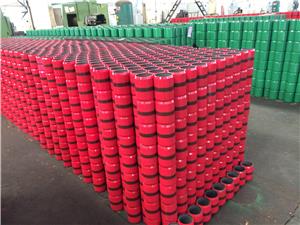Innovative Seamless Steel Tube Bending Applications — BEILAI Industry Solutions
Innovative Seamless Steel Tube Bending Applications — BEILAI Industry Solutions
BEILAI presents a comprehensive guide to seamless steel tube bending — exploring modern techniques, equipment, industry use-cases, and best practices for reliable seamless steel tube bending applications.
Introduction: Why Seamless Steel Tube Matters in Bending
The performance of any bent tubing depends on material integrity, processing methods, and application requirements. At BEILAI we focus on the mechanical reliability of the seamless steel tube and on optimizing manufacturing processes for robust seamless steel tube bending applications. A properly formed seamless steel tube maintains wall thickness, excellent strength and fatigue resistance after bending, which is why so many industries choose seamless steel tube components for critical bent parts.
Core Advantages of Seamless Steel Tube for Bending
Choosing seamless steel tube for bending delivers several key advantages for designers and manufacturers involved in seamless steel tube bending applications:
Uniform wall and material continuity: a seamless steel tube has no longitudinal weld, reducing the risk of crack initiation in many bending applications.
Improved fatigue life: bent parts made from seamless steel tube typically have better fatigue resistance in cyclic loading contexts common to many seamless steel tube bending applications.
Dimensional consistency: the consistent geometry of a high-quality seamless steel tube simplifies producing precise bends for demanding seamless steel tube bending applications.
Wide material choice: carbon, alloy and stainless grades of seamless steel tube are available to match the corrosion, strength and temperature requirements of varied seamless steel tube bending applications.
Common Seamless Steel Tube Bending Techniques
Manufacturers apply several bending techniques for successful seamless steel tube bending applications. Each method suits different diameters, wall thicknesses and final use-cases for the seamless steel tube.
Mandrel Bending
Mandrel bending is widely used when internal support is required to prevent ovality and wrinkling — particularly for high-precision seamless steel tube bending applications. When a mandrel is inserted, the seamless steel tube preserves internal geometry and delivers consistent cross-section after bending.
Rotary Draw Bending
Rotary draw bending is preferred for tight-radius, high-accuracy seamless steel tube bending applications. This approach is ideal when the seamless steel tube must meet exact bend angle tolerances and maintain wall thickness across curves.
Roll Bending
For large-radius curves and structural uses, roll bending is economical and efficient for large-diameter seamless steel tube components in heavy-duty seamless steel tube bending applications.
Stretch Bending
Stretch bending reduces cross-section variability for thin-walled seamless steel tube and is used in select seamless steel tube bending applications where straightness and aesthetic finish are important.
Key Process Controls for Reliable Bends
Successful seamless steel tube bending applications demand careful control of tooling, lubrication, bend sequence and material preconditioning. BEILAI recommends:
Material selection: match the right grade of seamless steel tube (e.g., low-alloy for strength; stainless for corrosion resistance) to the intended seamless steel tube bending applications.
Proper tooling and dies: tool geometry must suit the OD and wall thickness of each seamless steel tube for a given bend in the seamless steel tube bending applications lineup.
Mandrel and internal support when required: prevent buckling and wrinkling for critical seamless steel tube bending applications.
Controlled bend speed and lubrication: reduce friction and avoid micro-cracks in the seamless steel tube during forming for long-lasting seamless steel tube bending applications.
Post-bend heat treatment or straightening: where required for fatigue-sensitive seamless steel tube bending applications, apply stress-relief or straightening passes.
Industries and Use-Cases
The adaptability of the seamless steel tube makes it a top choice across many industries. BEILAI serves clients that require precision in the following seamless steel tube bending applications:
Automotive and Mobility
Suspension components, roll cages, steering columns and exhaust supports often rely on bent seamless steel tube. Automotive seamless steel tube bending applications require tight tolerances, consistent wall thickness and high fatigue resistance — characteristics inherent to quality seamless steel tube.
Oil & Gas and Energy
Downhole tubulars, pipeline bends, and skid-mounted heat exchangers use bent seamless steel tube where integrity under pressure and cyclic loads is vital for critical seamless steel tube bending applications.
HVAC and Heat Exchangers
Coil tubing and condenser runs in HVAC systems demand smooth bends with minimal deformation. BEILAI supplies seamless steel tube suited for efficient HVAC seamless steel tube bending applications.
Structural and Architectural
Curved railings, frames and load-bearing structures use bent seamless steel tube for both aesthetics and strength in architectural seamless steel tube bending applications.
Quality Assurance and Testing
For demanding seamless steel tube bending applications, BEILAI enforces rigorous inspection and testing protocols. Our test program for each seamless steel tube batch includes dimensional checks, non-destructive testing, hardness and tensile tests, and bend sample evaluation to confirm that bent parts meet design criteria for safety-critical seamless steel tube bending applications.
Design Tips for Engineers
Engineers planning projects with bent seamless steel tube should consider wall thickness selection, minimum bend radius, bend direction sequencing, and allowances for springback to optimize their seamless steel tube bending applications. Early collaboration with BEILAI’s technical team ensures appropriate material and process choices that reduce cost and increase reliability in finished bent assemblies.
Case Study: Automotive Chassis Subassembly
A major OEM required a bent chassis subassembly that maintained dimensional stability under fatigue for 200k cycles. By specifying a high-strength seamless steel tube, using mandrel-assisted rotary draw bending and performing post-bend stress relief, the finished component exceeded lifecycle targets. This successful implementation highlights how pairing the right seamless steel tube with optimized forming methods produces durable seamless steel tube bending applications.
Conclusion — BEILAI’s Commitment to Bent Tube Excellence
Whether your project calls for small-diameter precision components or large structural curved elements, BEILAI’s expertise with seamless steel tube and proven methods for seamless steel tube bending applications make us an ideal partner. We combine material science, advanced bending technology, and stringent quality control to deliver bent tubing solutions that stand up to real-world demands. Contact BEILAI to discuss your next seamless steel tube bending applications project and discover how our seamless solutions can improve performance and reduce lifecycle costs.




